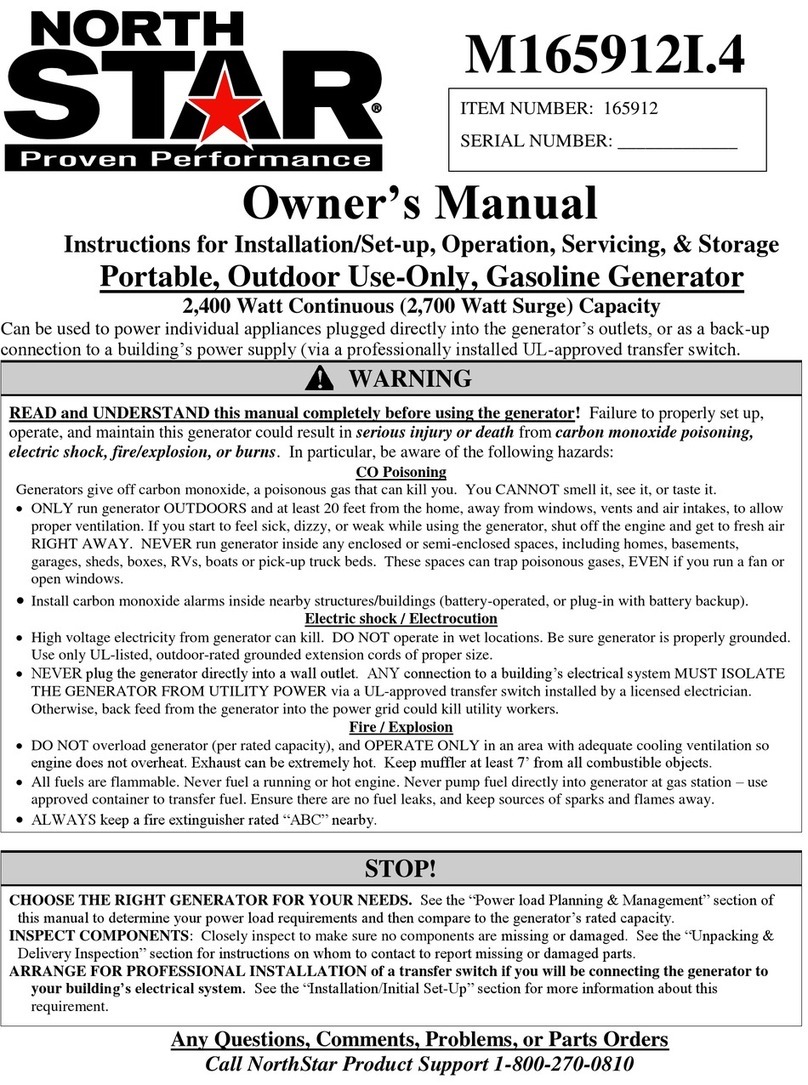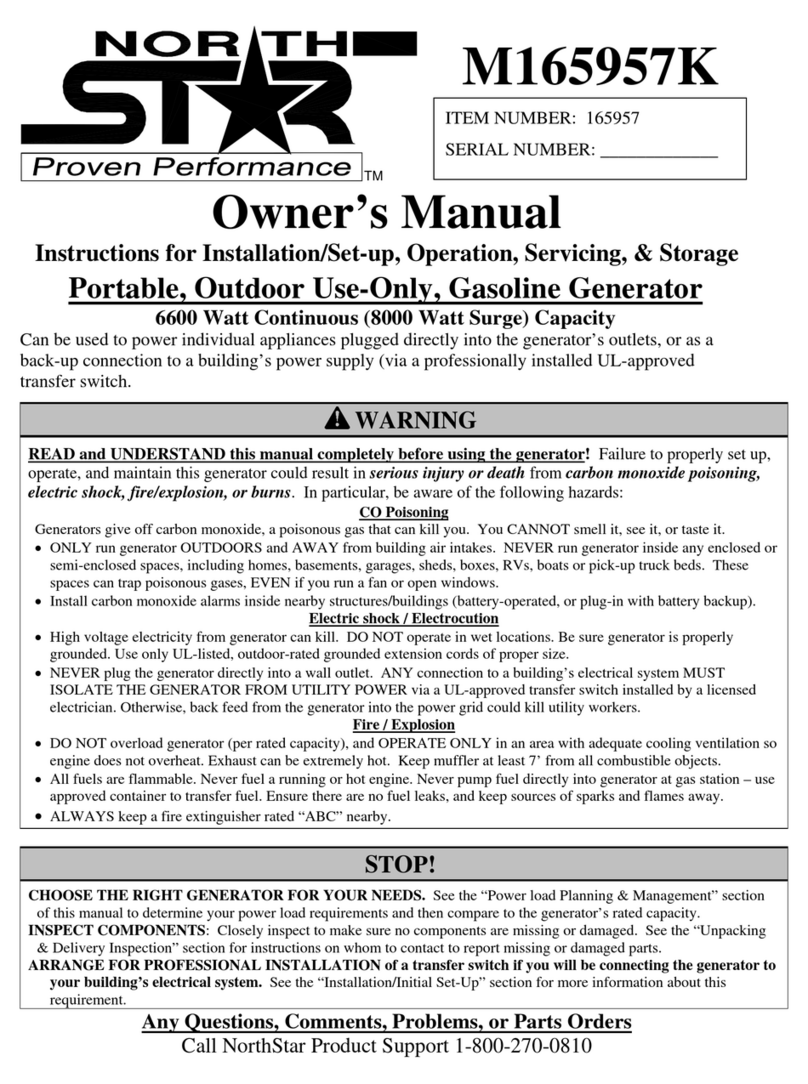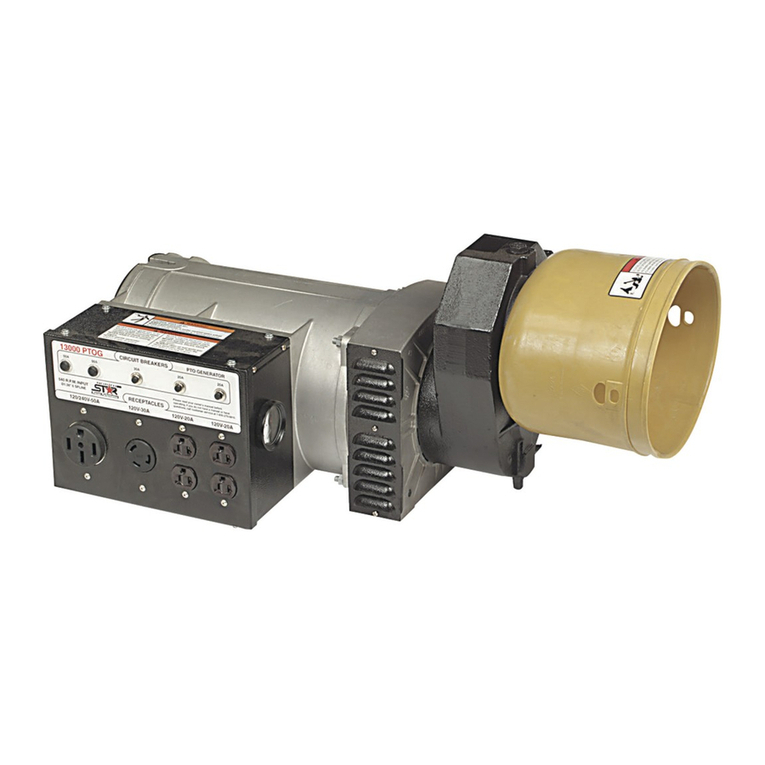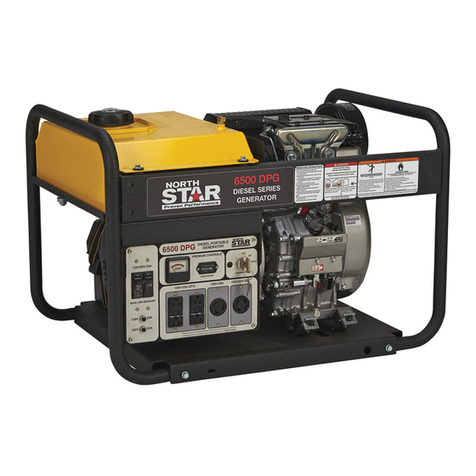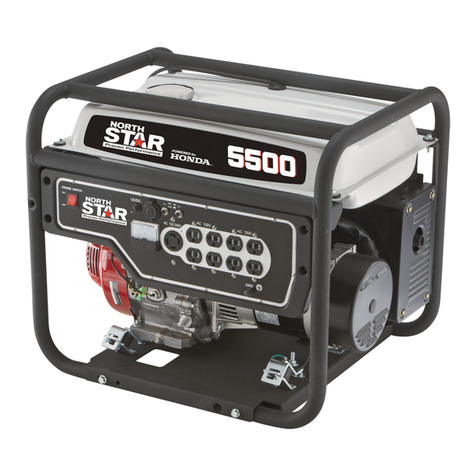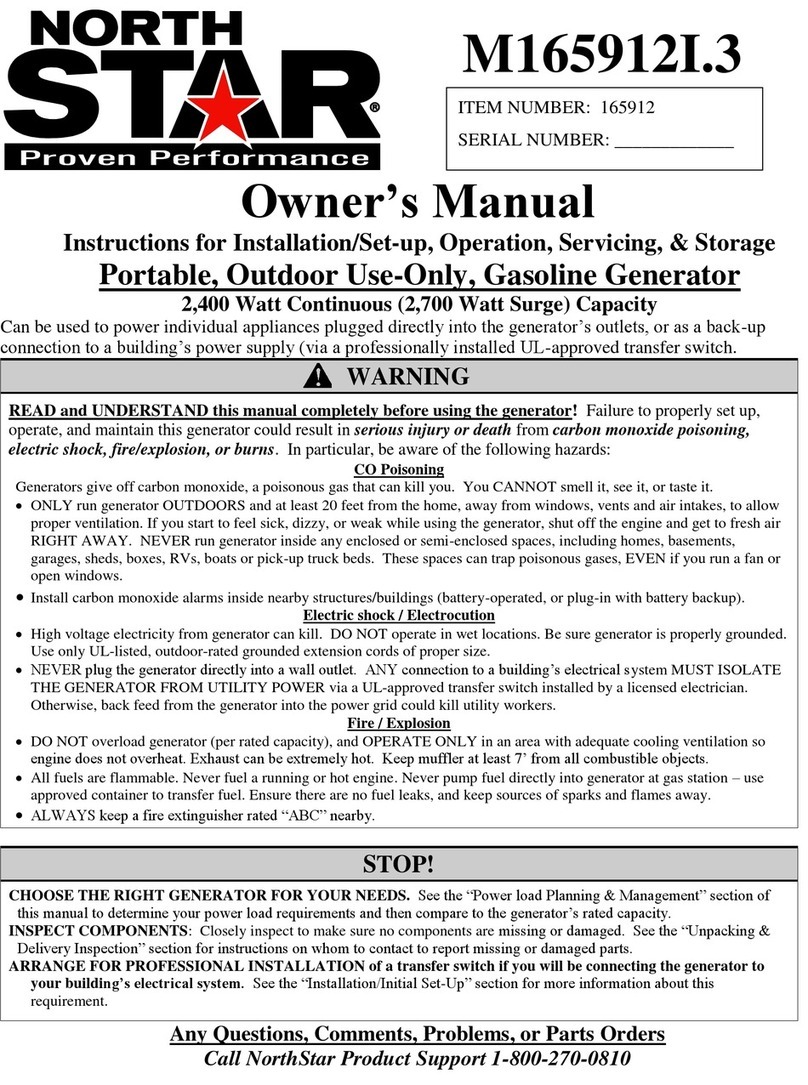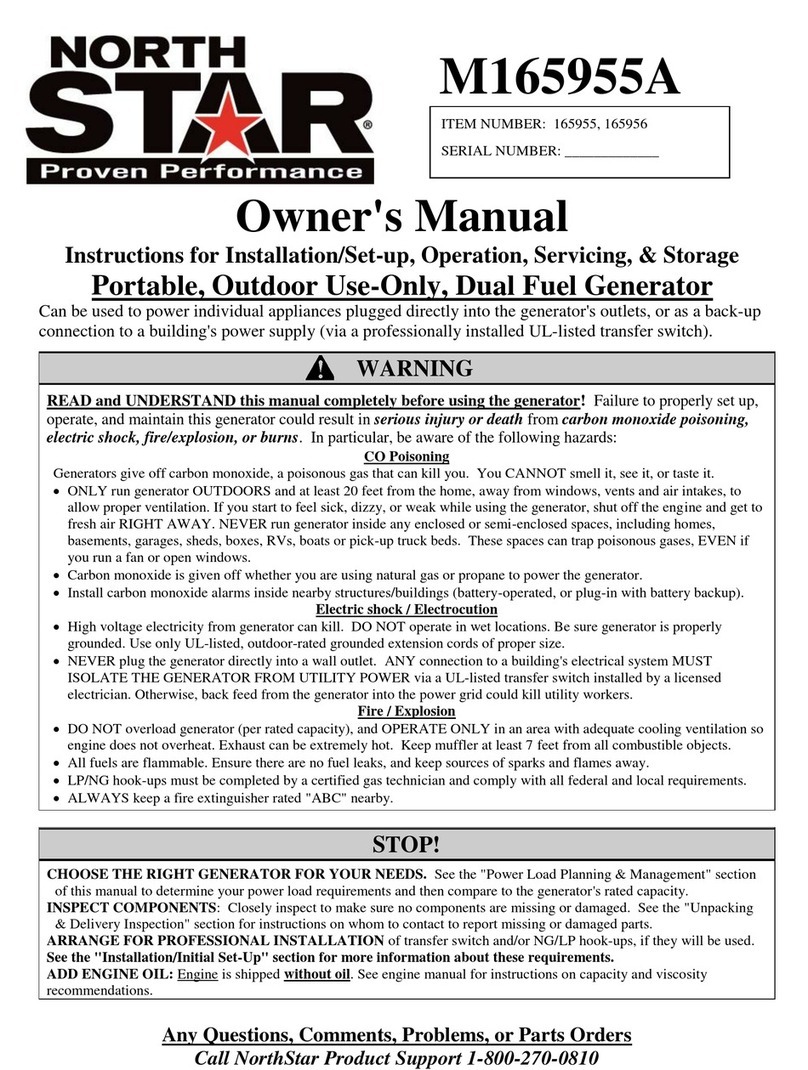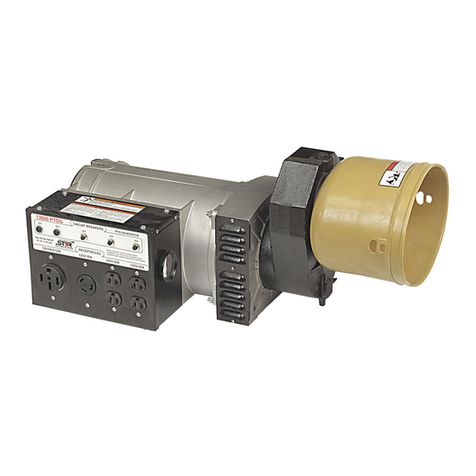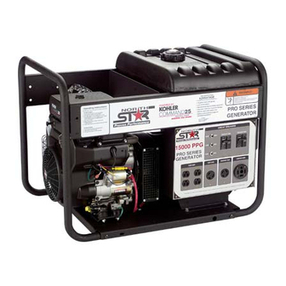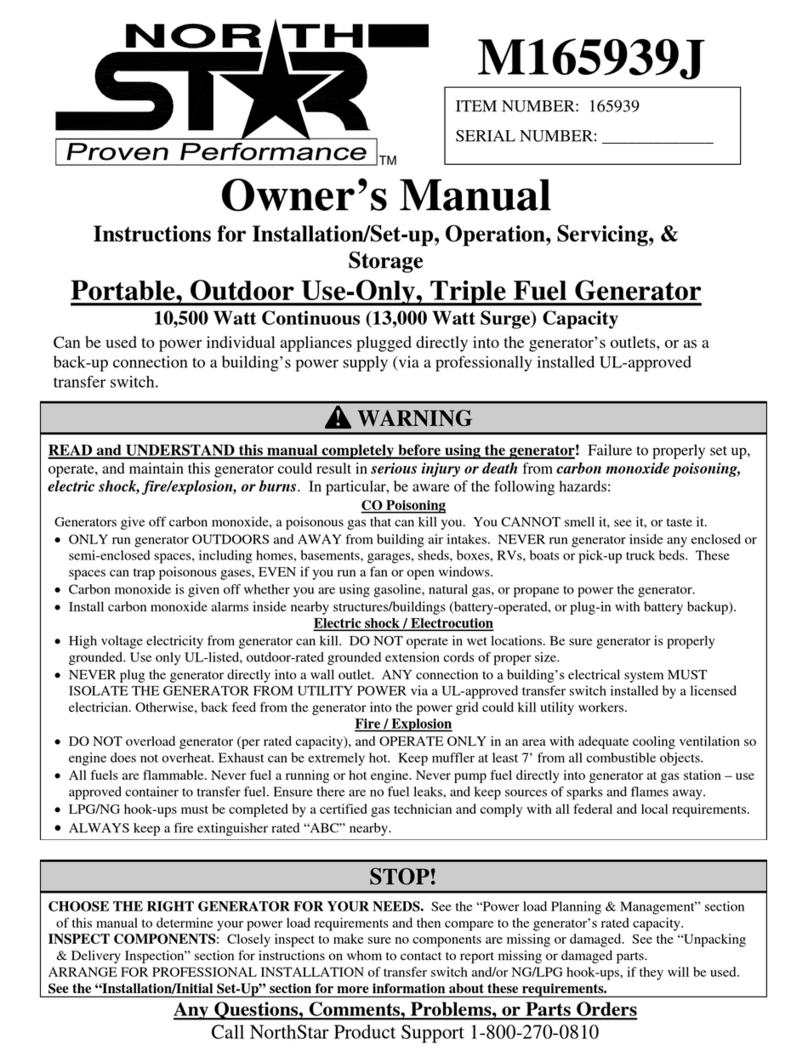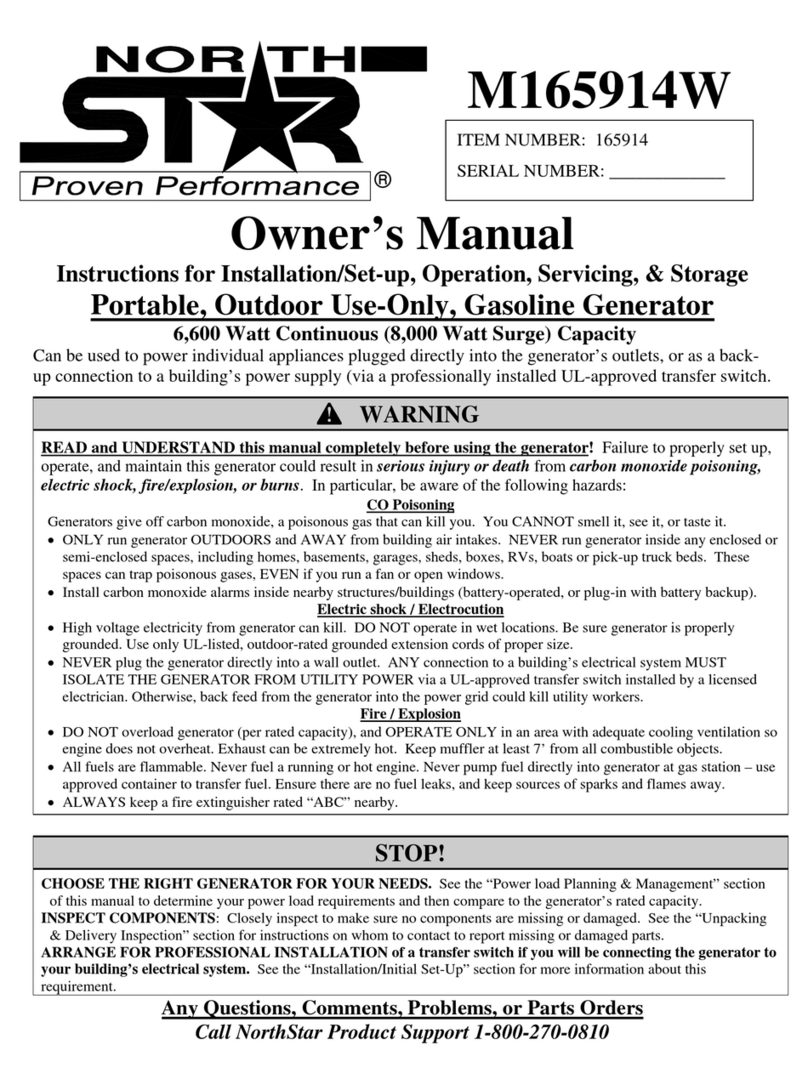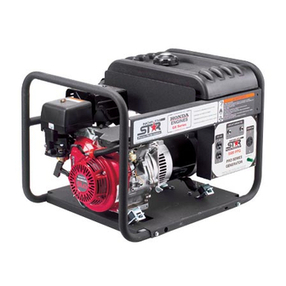
5
Shipping Restraint
The stand by generator is delivered with a
shipping restraint to prevent damage. Remove the
bolt, spacer, and yellow tag located just below the
engine starter. Failure to remove shipping restraint
may cause damage tomachine.
2.4 Installation Preparation
Prior to installation of this equipment check the
ratings of both the generator set and transfer
switch. The generatorand transfer switch voltage,
amperage, and wattage must be adequate to
handle all electrical loads that the generator and
transfer switch will power. In some instances
critical or essential electrical loads will require
“grouping” together into a separate load panel as
the generator will not be of sufficient size to carry
all electrical loads.
CAUTION •Electrical and/or building
permits may be required in your area for
installation of a Standby generator. Check
your local codes for routing of gas lines and
noise ordinance allowances.
Fig. 01164 – Pallet Disassembly
The stand bygeneratorisfastenedto the shipping
palletby four 1/4” X 1.5” lagbolts. A 1/2” wrench is
required to remove the lag bolts from the pallet
(Figure 01164).
2.5 Generator Location
DANGER •Neveroperate thisgeneratorin
anenclosedarea.Exhaust gasescontain carbon
monoxide,anodorlessanddeadly poison.
DANGER •Neverinstall thegeneratorin
a locationthat exhaust gasescan seep back
into closed rooms. Gasescan seepinto closed
roomsthrough windows, doors, and floors.
Install the stand by generator set outdoors where
thereisan adequate supplyof fresh cooling air.To
help ensure trouble free operation, the following
suggestionsshould beconsidered:
1: Neverinstall the generator inareasprone to the
collectionof rainwater.
2: Never install the generator in an area that is
prone toflooding.
3: Neverlocate the generator ona roof.
4: Always locate the generator as close to the
transfer switch as possible. This will shorten the
length of electrical lead wire and conduit that is
required for the installation.
5: Always install the generator as close as
possible to the fuel source. This will help reduce
the length of pipe required for the installation.
ALWAYS consult your gas supplier, as they are
aware of laws and local codes governing the
placementof the gaspipe.
6: Always install the generator such that the air
inlets and outlets will not become blocked or
clogged with grass, leaves, litter, snow, or other
items. Clogged inlets or outlets will cause the
engine and generator to perform poorly, and
possibly resultin equipment failure.
7: Always install the generator such that there is
adequate space on all sides for servicing and
performing maintenance. A minimum of 7 feet on
all sides should be adequate. REMEMBER:
LAWS OR CODES MAY DICTATE REQUIRED
DISTANCES FROM STRUCTURES OR FUEL
SOURCES.
2.6 Sizing the Generator Mounting Slab
The stand by generator must be mounted on a
mounting pad that adequately supports the
generator housing. External isolation mounts are
not required as the generator set has vibration
isolation mounts located between the engine -
generator and thebase.
It is advisable to fasten the generator
compartment to a concrete mounting slab with a
quantity (4) of 1/4 - inch masonry type anchor
bolts. Check that the bolts are of sufficient length
to adequately secure the enclosure.
The concrete slab should extend past the
enclosure bya minimum of 3incheson all sides.
The concrete slab must be level. For further
details concerning concrete slab dimensions and
details, see FIG01168.
LAGBOLT
PALLET
FIG01164
Bolt
Space
Yello
Tag
